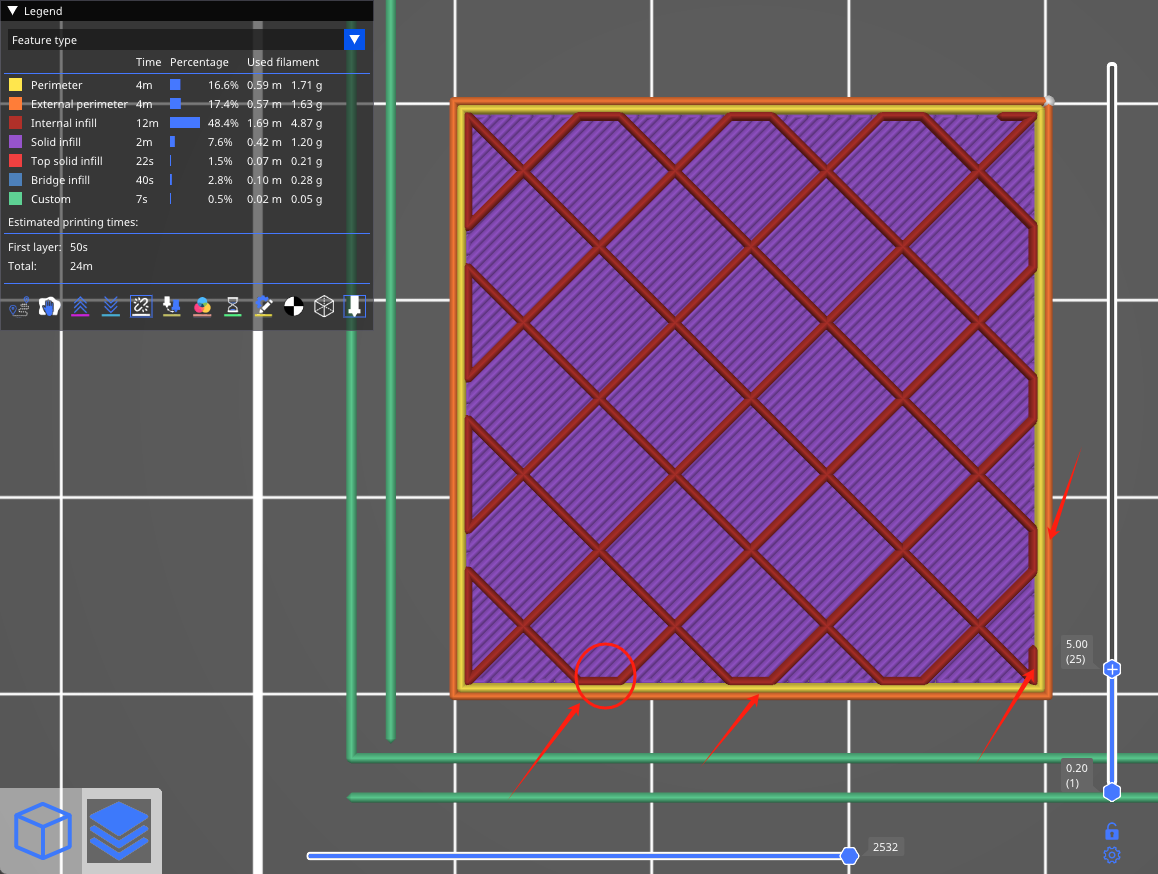¶ Introduction
The main purpose of infill is to provide internal support for top layers, which would otherwise have to bridge over empty space. Infill also affects the speed of printing, structural strength, filament consumption, and even the look of the printed object.
Note:Some options will only appear when Expert mode is selected.
¶ Fill density
Most models can be printed with 10-15% infill. If the top of the model closes gradually, it can be printed hollow (0% infill), though we generally do not recommend it. If you need the model to be heavier, want more compression resistance or higher stiffness, you can increase the infill. You'll rarely need infill higher than 30%.
¶ Fill pattern
We offers many infill patterns to choose from - check the dedicated Infill pattern.
¶ Length of the infill anchor
The infill is usually connected to the perimeters with a so-called anchor, which is a short line of another (inner) perimeter that turns into an infill line. This makes the infill sturdier and is required by some materials (namely PETG) to stabilize the extrusion flow at the start of an infill line.
The length of the infill anchor value sets how many millimeters of this anchor will connect the infill and the perimeters. If you set this value to 0, the infill will be printed independently on the perimeters. Set a higher value to print the anchor that will continue as the infill itself.
If expressed as a percentage (15%) it will be calculated over the infill extrusion width.

¶ Maximum length of the infill anchor
This value sets the maximum length of the infill anchor connecting the infill with perimeters.
Set this parameter to 0 to disable anchoring completely.
¶ Top fill pattern
You can pick a custom infill pattern that only affects the top visible layer, not adjacent solid layers below.
¶ Bottom fill pattern
You can pick a custom infill pattern that only affects the bottom visible layer, not adjacent solid layers above.
¶ Combine infill every
The fill and outline will use different layers of height, while accelerating print quality without sacrificing print quality.
For example, fill once every 3 layers. The layer height is 0.1mm and the fill will be printed at 0.3mm height. That is, print three layers of outline and then print one fill.
Maximum height is limited by nozzle diameter. If you try to combine each 1+ layer fill with a 0.4mm nozzle and a 0.3mm height, nothing really changes because you can't print layers larger than (about) 0.32mm (80% of the nozzle diameter).
¶ Solid infill every
This feature allows you to force the use of ** solid fill ** after each given number of layers. This helps to strengthen the strength of the print.
¶ Fill angle
Default angle for infill orientation. Cross-hatching will be applied to some infill patterns.
¶ Solid infill threshold area
Force solid infill for regions having a smaller area than the specified threshold.
Set to 0 to disable.